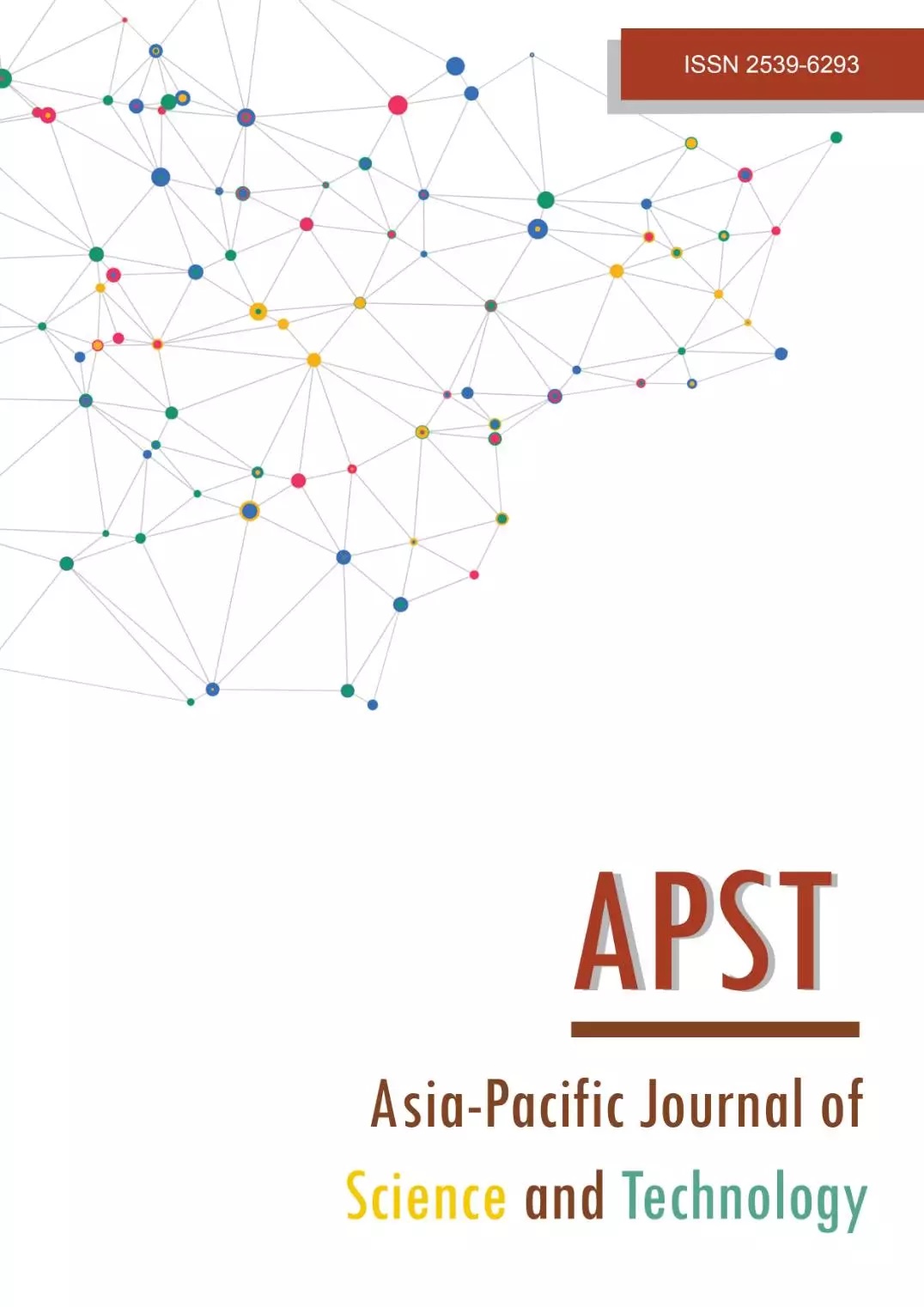A fatigue and stress distribution analysis of horizontal axis wind turbine blade
Main Article Content
Abstract
Fatigue stress distributions developed on the wind turbine lead to fatigue failure due to various loads. The present study was performed under various loads such as gravitational load, centrifugal forces, and aerodynamic forces (lift and drag pressure) for Horizontal-Axis Wind Turbine (HAWT) blade made of composite materials (E-glass fibre). Fatigue failure analysis of wind turbine blade type the National Advisory Committee for Aeronautics (NACA) 4412 performed under wind speed of 35 m/s. After completing both the Computational Fluid Dynamics (CFD) and static structural analysis, the output results such as total stress, deformation, and shear stress are identified. Simultaneously, critical locations on the blade are shown on the CFD results. It is concluded that the maximum stress location in a wind turbine is the blade's leading edge and the blade root (part the nearer of the hub). The wind speed increases beyond recommendation design, and it decreases the life of the wind turbine blade. The blade's leading edge is more deformed, and the centrifugal load is considered the most influential factor in the life of the blades.
Article Details

This work is licensed under a Creative Commons Attribution-NonCommercial-NoDerivatives 4.0 International License.
References
Gaddada S, Kodicherla SPK. Wind energy potential and cost estimation of wind energy conversion systems (WECSs) for electricity generation in the eight selected locations of Tigray region (Ethiopia). Renew Wind Water Sol. 2016;3(1):2-13.
Kumar KS, Kumar MA, Nanduri PM. Analysis of wind speed data for energy production at Central Ethiopia, Adama. IJLRET. 2015;1(2):1-8.
Mulugeta B, Gerawork A. Aerodynamic design of horizontal axis wind turbine blades. FME Trans. Epub ahead of print. FME Transactions. 2017;45(4):647-660.
Grujicic M, Arakere G, Subramanian E, Sellappan V, Vallejo A, Ozen M. Structural-response analysis, fatigue-life prediction, and material selection for 1 MW horizontal-axis wind-turbine blades. J Mater Eng Perform. 2010;19(6):790-801.
Tawade SV, Todkar SB, Hade AS. Fatigue life optimization of wind turbine blade. Int J Res Eng Technol. 2014;3(3):843-850.
Lin JH, Xu YL, Xia Y. Structural analysis of large-scale vertical axis wind turbines Part II: fatigue and ultimate strength analyses. Energies. 2019;12(13):2584.
Ismaiel AM, Metwalli SM, Elhadidi BM, Yoshida S. Fatigue analysis of an optimized HAWT composite blade. Evergreen. 2017;4(2-3):1-6.
Sardi HE, Sankararaman S, Escobet T, Puig VC, Frost SA, Goebel K. Analysis of two modeling approaches for fatigue estimation and remaining useful life predictions of wind turbine blades. In: Orchard M, editor in chief. Third European Conference of the Prognostics and Health Management Society; 2016 Jul 5-8; Bilbao, Spain. New York: PHM Society; 2009. p. 1-11.
Hu W, Choi KK, Cho HK. Reliability-based design optimization of wind turbine blades for fatigue life under dynamic wind load uncertainty. Struct Multidiscipl Optim. 2016;54(4):953-970.
Lambert J, Chambers AR, Sinclair I, Spearing SM. 3D damage characterisation and the role of voids in the fatigue of wind turbine blade materials. Compos Sci Technol. 2012;72(2):337-343.
Kulkarni PA, Hu WF, Dhoble AS, Padole PM. Statistical wind prediction and fatigue analysis for horizontal-axis wind turbine composite material blade under dynamic loads. Adv Mech Eng. 2017;9(9):1-26.
Lee HG, Park JS. Static test until structural collapse after fatigue testing of a full-scale wind turbine blade. Compos Struct. 2016;136:251-257.
Gonabadi H, Moharrami N, Oila A, Bull SJ. Wet flexural fatigue behaviour of tidal turbine blade composite materials. In: Hoffmann F, editor. 11th European Wave and Tidal Energy Conference; 2015 Sep 6-11; Nantes, France. Newcastle: ePrints; 2003. p. 1-11.
Mahri ZL, Rouabah MS. Calculation of dynamic stresses using finite element method and prediction of fatigue failure for wind turbine rotor. WSEAS Trans Appl Theor Mech. 2008;3(1):28-41.
Chen HP, Zhang C, Huang TL. Stochastic modelling fatigue crack evolution and optimum maintenance strategy for composite blades of wind turbines. Struct Eng Mech. 2017;63(6):703-712.
Castro O, Lennie M, Branner K, Pechlivanoglou G, Brøndsted P, Mayeri CN, et al. Comparing fatigue life estimations of composite wind turbine blades using different fatigue analysis tools. In: Thomsen OT, editor. 20th International Conference on Composite Materials; 2015 Jul 19-24; Copenhagen, Denmark. Ottawa: ICCM; 1975. p. 1-13.
Samborsky DD, Sears AT, Mandell JF. Static and fatigue testing of thick adhesive joints for wind turbine blades. In: Hand MR, editor. 47th AIA Aerospace Sciences meeting including the New Horizons Forum and Aerospace Exposition; 2009 Jan 5-8; Florida, United States. Virginia: AAIA; 1963. p. 1-21.
Leian Z, Xuemei H, Guangming Y. Fatigue life evaluation for wind turbine blade based on multistage loading accumulative damage theory. Mech Eng J. 2015;9:422-427.
Zhang C, Chen HP. Optimum maintenance strategy for fatigue damaged composite blades of offshore wind turbines using stochastic modelling. In: Chen D, Cho MG, Bargmann S, Choi CK, editors. The 2016 World Congress on Advances in Civil, Environmental, and Materials Research (ACEM16)/The 2016 Structures Congress (Structures16); 2016 Aug 28 - Sep 1; Jeju, South Korea. Daejeon: Techno-Press; 1999. p 1-20.
Fraisse A, Brøndsted P. Compression fatigue of wind turbine blade composite materials and damage mechanism. In: Du SY, Leng JS, editor. 21st International Conference on Composite Materials (ICCM-21); 2017 Aug 20-25; Xi'an, China. Beijng: CSCM; 1989. p. 1-8.
Maldhure SS, Kharde YR. Fatigue failure analysis of small wooden wind turbine blade. Int J Comput Eng Sci. 2013;3(2):58-61.
Tenguria N, Mittal ND, Ahmed SR. Structural analysis of horizontal axis wind turbine blade. Wind Struct An Int J. 2013;16(3):241-248.
Mathew AP, Athul S, Barath P, Rakesh S. Structural analysis of composite wind turbine blade. Int Res J Eng Technol. 2018;5(6):1377-1388.
Rashedi A, Sridhar I, Tseng K. Multi-objective material selection for wind turbine blade and tower: Ashby’s approach. Mater Des. 2012;37:521-532.
Kadve A, Sharma P, Patel A. Review on CFD analysis on aerodynamic design optimization of wind turbine rotor blade. Int J Innov Emerg Res Eng. 2016;3(5):178-182.
Dai JC, Hu W, Shen XB. Load and dynamic characteristic analysis of wind turbine flexible blades. J Mech Sci Technol. 2017;31(4):1569-1580.


